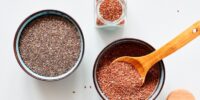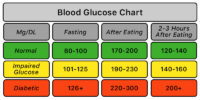What Is The Function Of Antipruritic Medications In Relieving Itching?

The function of antipruritic medications in relieving itching is a topic of interest in the field of dermatology. Itching, or pruritus, is a sensation that often accompanies various skin conditions and can significantly impair quality of life. Understanding the underlying mechanisms of itching is crucial for developing effective treatment strategies.
Histamine, a neurotransmitter released during immune responses, plays a central role in the itching process. Antihistamines, a class of antipruritic medications, work by blocking histamine receptors, thereby reducing the itch signal. Additionally, topical steroids are commonly prescribed to alleviate itching by reducing inflammation in the skin. Moisturizers help soothe dry and irritated skin, while topical anesthetics numb the itch sensation. Immunosuppressants may be used to manage itching associated with certain skin conditions.
Other antipruritic medications and therapies exist, offering alternative approaches to itch relief. This article aims to explore the function of antipruritic medications in relieving itching, providing a comprehensive overview of their mechanisms and effectiveness.
Key Takeaways
- Antipruritic medications control immune response and alleviate discomfort caused by itching.
- They are effective in reducing pruritus caused by conditions like atopic dermatitis, psoriasis, and contact dermatitis.
- Antipruritic creams and ointments containing immunosuppressants suppress the immune system’s inflammatory response.
- Common immunosuppressants used in antipruritic medications include corticosteroids, calcineurin inhibitors (tacrolimus and pimecrolimus), and phosphodiesterase inhibitors (apremilast).
Understanding the Itching Process
The itch response is a complex physiological process that involves the activation of sensory nerves, release of neurotransmitters, and stimulation of histamine receptors, all of which contribute to the sensation of itching.
Sensory nerves, also known as itch-specific neurons, are responsible for detecting and transmitting itch signals to the brain. These neurons are activated by various itch-inducing stimuli, such as insect bites, allergens, and irritants.
Once activated, the sensory nerves release neurotransmitters, such as histamine, serotonin, and substance P, which further enhance the itch sensation. Histamine, in particular, plays a crucial role in the itching process by binding to specific receptors on the surface of nerve cells, triggering an itch response.
Understanding the role of sensory nerves and neurotransmitters in the itching process is essential for developing effective antipruritic medications that can target specific components of the itch pathway and provide relief from itching.
Histamine and Its Role in Itching
Histamine, a chemical compound released by mast cells, plays a crucial role in the sensation of itching. When histamine is released, it binds to specific receptors on the nerve cells responsible for transmitting itch signals to the brain. These receptors, known as histamine receptors, are found throughout the body, particularly in the skin. The activation of histamine receptors leads to the initiation and amplification of the itching sensation. Antihistamine medications work by blocking these histamine receptors, preventing histamine from binding to them. This action reduces the itch signal transmission to the brain, providing relief from itching. Antihistamines can be classified based on their ability to cross the blood-brain barrier, with the ones that do being more sedating. By understanding the role of histamine and its receptors, antipruritic medications can effectively target the underlying cause of itching and provide relief to individuals experiencing this uncomfortable sensation.
| Histamine Receptors | Location | Function |
|---|---|---|
| H1 receptors | Skin, blood vessels, respiratory tract, gastrointestinal tract | Mediate itching, allergic reactions, and smooth muscle contraction |
| H2 receptors | Stomach, heart, blood vessels | Regulate gastric acid secretion and cardiovascular function |
| H3 receptors | Central nervous system, peripheral nervous system | Modulate neurotransmitter release and play a role in cognition and memory |
| H4 receptors | Immune cells, bone marrow, colon, spleen | Regulate immune responses and inflammation |
Antihistamines: Blocking the Itch Signal
Blocking the histamine receptors with antihistamines is an effective approach to alleviate the discomfort caused by itching. Antihistamines work by binding to the histamine receptors on target cells, thereby preventing histamine from binding and triggering the itch response. By blocking the histamine signal, antihistamines effectively reduce itching sensations.
However, it is important to note that antihistamines may not be effective for all types of itching. Itching can have various underlying causes, such as dry skin, allergic reactions, or nerve damage, and antihistamines primarily target histamine-induced itching. Therefore, alternative treatments may be necessary for itch relief in cases where histamine is not the main culprit.
These alternative treatments may include moisturizers, corticosteroids, or medications that target specific pathways involved in itching, such as neurokinin-1 receptor antagonists.
Further research is needed to explore and develop more targeted antipruritic mechanisms to address the diverse causes of itching.
Topical Steroids: Reducing Inflammation and Itching
Topical steroids play a crucial role in alleviating inflammation and itchiness, providing much-needed relief for individuals suffering from various skin conditions. These medications, available in cream, ointment, or lotion form, work by reducing inflammation and soothing the skin. They are commonly prescribed for conditions such as eczema, psoriasis, and allergic reactions.
Here are four key benefits of using topical steroids:
- Reducing inflammation: Topical steroids work by suppressing the immune response in the skin, which in turn reduces inflammation. This helps to alleviate redness, swelling, and discomfort associated with itching.
- Relieving itching: By reducing inflammation, topical steroids effectively relieve itching caused by various skin conditions. They help to calm the nerve endings in the skin, providing immediate and long-lasting relief.
- Soothing irritated skin: These medications have a soothing effect on the skin, helping to alleviate discomfort and improve overall skin health. They can also help to restore the skin’s natural barrier function.
- Targeted application: Topical steroids can be applied directly to the affected area, allowing for targeted treatment. This helps to minimize systemic side effects commonly associated with oral steroid medications.
Overall, topical steroids are a valuable tool in managing skin conditions characterized by inflammation and itching. They provide targeted relief and help improve the quality of life for individuals suffering from these conditions.
Moisturizers: Soothing Dry and Irritated Skin
Moisturizers are an essential component in the management of dry and irritated skin, providing soothing relief and improving overall skin health. These products work by replenishing the skin’s natural moisture barrier, preventing water loss, and enhancing hydration. By moisturizing the skin, they help to alleviate dryness and restore its suppleness. Additionally, moisturizers can also help in treating skin irritation by providing a protective barrier against external irritants and reducing inflammation. They contain ingredients such as humectants, occlusives, and emollients, which work synergistically to soothe and hydrate the skin. Humectants attract moisture from the environment and bind it to the skin, while occlusives create a barrier to prevent water loss. Emollients soften and smooth the skin’s surface, reducing roughness and improving its appearance. Overall, moisturizers play a crucial role in soothing dryness and treating skin irritation, promoting healthier and more comfortable skin.
| Humectants | Occlusives | Emollients |
|---|---|---|
| Glycerin | Petrolatum | Shea Butter |
| Hyaluronic Acid | Mineral Oil | Jojoba Oil |
| Urea | Dimethicone | Ceramides |
Topical Anesthetics: Numbing the Itch
Numbing the itch, topical anesthetics provide temporary relief by desensitizing the skin and alleviating discomfort. These numbing agents, commonly found in anti-itch creams, work by blocking nerve signals from the skin to the brain, reducing the sensation of itching.
Topical anesthetics typically contain active ingredients such as lidocaine, benzocaine, or pramoxine, which have a numbing effect on the skin. When applied to the affected area, these medications penetrate the skin and inhibit the transmission of pain signals, providing immediate relief from itching.
However, it is important to note that topical anesthetics should be used sparingly and as directed, as excessive use or application to large areas of the body can lead to adverse effects such as skin irritation or allergic reactions.
Immunosuppressants: Controlling Itching from Skin Conditions
Immunosuppressants are used to regulate and manage itching associated with various skin conditions, offering a means to control the underlying immune response and alleviate discomfort.
In dermatology, these medications have shown efficacy in reducing pruritus caused by conditions such as atopic dermatitis, psoriasis, and contact dermatitis.
Antipruritic creams and ointments containing immunosuppressants work by suppressing the immune system’s inflammatory response, thus reducing itching and inflammation.
Commonly used immunosuppressants include corticosteroids, calcineurin inhibitors like tacrolimus and pimecrolimus, and phosphodiesterase inhibitors such as apremilast.
These medications can be applied topically, providing targeted relief to affected areas.
However, it is essential to consider potential side effects and long-term use of immunosuppressants, as they may increase the risk of infections and other adverse events.
Therefore, close monitoring and consultation with a healthcare professional are crucial when using antipruritic immunosuppressant medications.
Other Antipruritic Medications and Therapies
Immunosuppressants are effective in managing itching caused by skin conditions, but there are also other antipruritic medications and therapies available. These alternatives can provide relief from itching without suppressing the immune system. One option is topical corticosteroids, which reduce inflammation and alleviate itching. They are commonly used for various skin conditions, including dermatitis and eczema. Another option is topical antihistamines, which block histamine receptors and reduce itching. These medications are often used for allergic reactions and insect bites. Additionally, emollients and moisturizers can help soothe dry and itchy skin by restoring moisture and creating a barrier. Natural remedies, such as aloe vera, chamomile, and oatmeal baths, have also been found to have antipruritic properties. These alternatives provide patients with a variety of options to manage itching based on their individual needs and preferences.
| Antipruritic Alternatives | Natural Remedies |
|---|---|
| Topical corticosteroids | Aloe vera |
| Topical antihistamines | Chamomile |
| Emollients and moisturizers | Oatmeal baths |
Frequently Asked Questions
What are the common side effects of antipruritic medications?
Common side effects of antipruritic medications include drowsiness, dry mouth, and skin irritation. However, their effectiveness in relieving itching may vary depending on the specific medication used and the underlying cause of the itching.
Can antipruritic medications be used to treat itching caused by allergies?
Antipruritic medications have been found to effectively relieve itching caused by allergies. While natural remedies may be an alternative, the effectiveness of antipruritic medications in treating itching caused by allergies is supported by research.
Are antipruritic medications safe for use in children?
Safety concerns and dosage recommendations should be considered when using antipruritic medications in children. Further research is needed to determine the specific safety profile and appropriate dosages for this population.
How long does it typically take for antipruritic medications to provide relief from itching?
Antipruritic medications can provide relief from itching, although the time it takes to take effect may vary. It is important to follow dosage recommendations to avoid potential long-term effects.
Are there any natural alternatives to antipruritic medications for relieving itching?
Natural remedies and herbal alternatives can be used to relieve itching. These options can include ingredients such as aloe vera, chamomile, and tea tree oil, which have soothing and anti-inflammatory properties.









